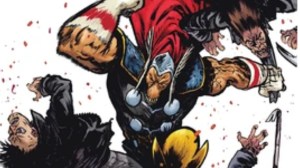Dungeons & Dragons’ new rules changes were made with an aim of removing pain points and improving the fun within games. Later this year, Wizards of the Coast will release a brand new version of Dungeons & Dragons’ core rulebooks, starting with the Player’s Handbook. The new rulebooks contain numerous revisions to the 5th edition ruleset, including some basic rules like how grappling or exhaustion works. In a recent interview with ComicBook, D&D lead rules designer Jeremy Crawford explained that the changes made to certain elements of the core rules were aimed not only at making the base rule better, but also providing extra benefit to the classes, feats, and other elements of the game that might use that rule.
Videos by ComicBook.com
“As we reviewed every aspect of the game, we were always looking for several things,” Crawford told ComicBook. “One, could we make it more fun? Which often means if a thing bogs play down, we’d look for ways to make it more streamlined, because usually that means the fun is going to go up. We’d also look for pieces of the game that were a pain point for people in the last 10 years and how to turn it into something that people are going to be happy to use. We were also looking at the interoperability of all of the rules together. Having the advantage of 10 years, not only of play and DMing, but also working on the game, this was our chance to see how we could make all the different parts of the game work even better together. A number of these changes are in base rules that are not just about making the base rule better, but it’s also about also benefiting classes, feats, species, magic items that rely on that element. And so, there can really be this multiplicative effect.”
Crawford pointed to the new grappling rules as one way that the basic rules benefit multiple parts of the game. “One of ways now that you can grapple is as a part of the redesigned unarmed strike,” Crawford said. “We wanted to make that sort of unarmed strike package, a really easy to use and versatile game option for everybody.”
While the Monk class most often uses unarmed strikes in combat, the new grappling rules means that an unarmed strike might be more usable by other players as well and that the Monk now had extra options thanks to the new grappling rules. “Occasionally, we’ll have other effects that will allow you to throw an unarmed strike into your combat mix,” Crawford said. “And we wanted to make that more tactically interesting so that you don’t just have to clobber somebody, you also could instead grab them or shove them. [In the original 2014 ruleset] every Monk that, when a feature was telling them they could make an unarmed strike, their only option for that extra unarmed strike was to deal damage. Now, every single one of those things is now an option to deal damage, grapple, or shove. And so, just that alone is a great example of that sort of multiplicative effect across the game.”
The Player’s Handbook will be released on September 17th. You can see more changes to the Dungeons & Dragons ruleset here.








